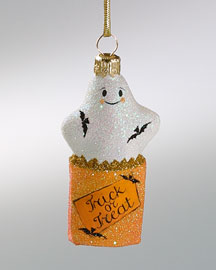Seen on typographi.ca: “Sometimes a bad font choice can send an unintended message.”
In case Neiman Marcus takes down the page in question:

Sometimes I think I should rename my Other department Humor and get it over with.
Still going after all these years.
Seen on typographi.ca: “Sometimes a bad font choice can send an unintended message.”
In case Neiman Marcus takes down the page in question:

Sometimes I think I should rename my Other department Humor and get it over with.
It’s always driven me nuts that the month links didn’t line up properly underneath my site calendar. I figured it had something to do with the way I had defined the div around the calendar, but I didn’t have time to look at it until this afternoon.
The problem was that the div was defined to start at 70% of the page width and take the rest of the space on the page, but the content was centered in the div. For some reason, the table had a different center than the line following it, which caused the month links to show up askew.
Easy fix, right? Just recode the width of the calendar div. Except that it turns out not to be simple with CSS. Basically, what I want the calendar to do is this:
I don’t know a way to manage all of those things at once. I currently have changed it so that the calendar hugs the right hand side (for what it’s worth, I changed the width to 190px, the same as the min-width; eliminated the left attribute; and set the right attribute to 0). But if you shrink the browser window too far, the calendar overprints the site logo.
Actually, this isn’t the biggest problem, since the content starts to run into the nav bar before this happens… This is all because there’s no concept of “min-left,” the minimum left distance from the left hand bounding box that an element needs to respect.
Mark Pilgrim surveys a crop of new postings that contrast RSS for syndication vs. semantic coding in the first place and sez they’re all wet. In doing so, he draws a useful line between XHTML theory and blogging practice:
…this latest XHTML-as-syndication movement seems to be based on the principle that “syndication is so incredibly important that you must immediately stop whatever you’re doing with your web pages, upgrade to XHTML, validate your markup, restructure your home page to include all and only the content you’re willing to syndicate, and by the way, would you please unlearn that ugly nasty presentational page layout language you’ve been using for years and learn this wonderful happy structured semantic markup language instead?”
It should be obvious to any rational observer that this will go nowhere fast. A syndication format that requires valid semantic XHTML markup? Spare me. 9 out of 10 bloggers can’t even spell XHTML.
Between user resistance, bandwidth issues, sites that don’t want to syndicate their entire content, Pilgrim goes on to coin an important principle: “Syndication is not publication….It’s something else, a different medium.” Right on. The iCal to RSS experiments alone should tip off most intelligent observers that there’s value in a standalone syndication format, and real power in separating syndication from publication.
more…
Currently playing song: “Funkentelechy” by Parliament on Tear The Roof Off.
Today’s posts from a year ago:
… because the weather here is fine. Cold, maybe, but clear. For the third day in a row. Is this really Seattle in the wintertime?
I feel good this morning. I feel like I could really get some things done today. Unfortunately that makes me want to work on things around the house rather than at work. But I’ll persevere. To quote myself quoting Beck:
I’m a driver, I’m a winner. Things are gonna change, I can feel it.